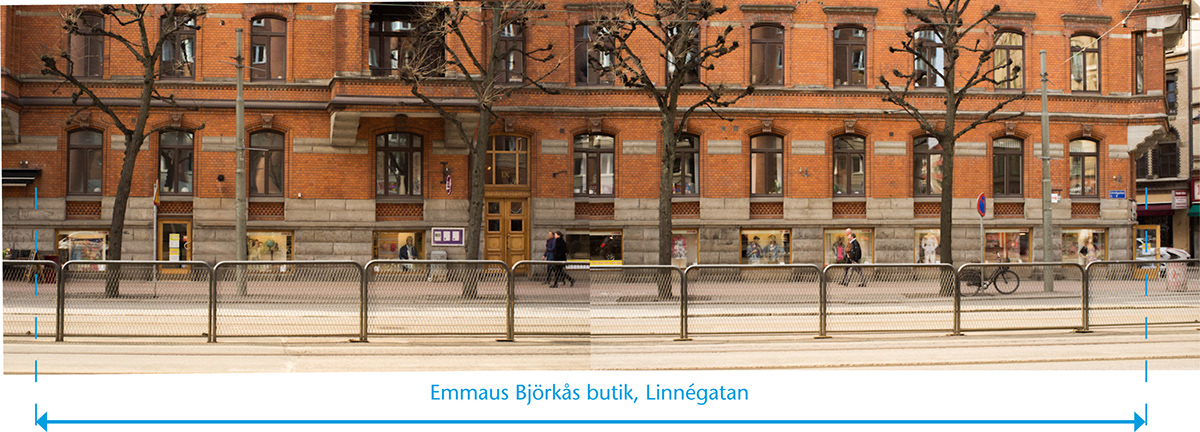“People throw broken, unusable clothes in our containers”
...Maybe they shouldn’t look like trashcans and attract that kind of dump?
Swedes consume about 15 kg of clothes each year per person, and of these 15 kilos we throw away 8 kg. The second hand industry is an important sector collecting the “waste products” of our consuming-always-wanting-more behaviour. In this project I was working for Emmaus Björkå, one of the NGO’s who collect and sell clothes and things second hand in order to finance different projects world wide that fight for human rights. Emmaus needed to strengthen their collecting of clothes since they face a growing competition in the form of other serious charity organisations, scammers and profit-driven companies like H&M, and reach out with who they are and what they do.
This resulted in three concepts for how they could strengthen their communication. Since they ought to use most of their budget to support the different projects, I wanted to focus on things that would be as cost-efficient as possible for them to apply in their marketing strategies.

The three concepts include the following areas; using their sales windows, personnel and the look of their containers to clearly communicate who they are and what they stand for. This in an engaging way since they rely on the people who donate clothes or money. It was clear that people want to feel that they make a difference and that they want to feel thrust and participation for the organization.


The concepts are designed to give the customers what they want to know without having to dig deep for the information them selves – to simplify the process of taking action and feeling good about it.

I did interviews with people to find out what their relationship to second hand looked like, both on giving clothes and buying second hand. This was visualized and analysed in rose diagrams.

Customer journey mapping to find problem areas where information could be incorporated.

A walk in the streets of Gothenburg to experience the containers and examine how the collecting-spots look like – there can for example be many containers from different organizations on the same spot; serious ones and scammers, however looking quite similar which can be deceiving.
The feelings and connotations around what the container looked like was important for trustworthiness for the organisation but also for the understanding of what to leave in the container.

“Do you have something that someone else needs more than you do?”
Emmaus Björkå have many (11 in a row!) and perfectly located display windows, which light up at night and can be used to communicate to customers as well as to people who don’t actually come in to shop. Instead of showing outfit combinations in a traditional way, they can make statements about their projects, about what they fight for and believe in, that the people are welcome to donate clothes etc.



After talking with people, many brought up the importance of the personnel in the stores; that they show their engagement, friendliness, and invite people into their work by sharing their passion or stories about the projects. Salespersons, but oh as importantly part-time marketers.
